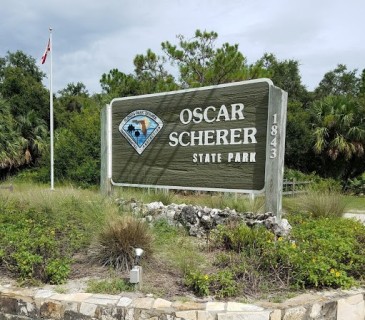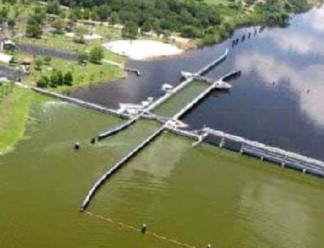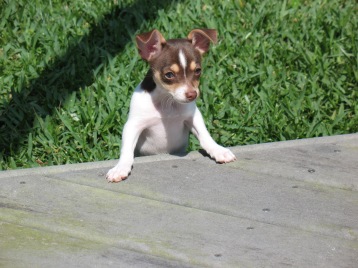The Suncoast
To me, one of the most beautiful things about Florida is the sky. The location on this long sandbar south of mainland America seems to limit the haze that tends to dim the sky in the south and mid-Atlantic states in summer. Here, the cumulonimbus clouds are vivid against the blue sky.
About two-thirds of the way down the state is the Sarasota/Bradenton region, also known as The Suncoast. I often wondered about the nickname and, after living here for twenty years or so, it’s clear why. Contrary to popular belief that it rains everyday at 3:00, there is not much rain along this part of the Gulf coast most of the year. (My Florida friends already know this, so I apologize to them in advance.)
A few unscientific observations: I’ve noticed that the weather patterns here in Florida are different. It seems to me that in most of America, fronts generally move from west to east. If there is a line of thunderstorms approaching, you’re probably going to get wet. But here in Florida most storms are localized. It can sometimes rain across the street yet your yard stays dry. You’ll watch threatening clouds build over your head but before you know it, they’ve moved on without a drop on you.

In the summer, onshore breezes blow moisture from the Gulf eastward across the land baking in the sun. At the point where conditions are right, like in the photo above, thunderstorms form and the sky opens up with rain. Normally, that happens 10+ miles inland and the storms usually move east. But in the last few hours before sunset, the Gulf breeze sometimes weakens and the storms start to drift back toward the coast. But they often fizzle out as the sun goes down. Hence, The Suncoast.

Last week I camped at Oscar Scherer State Park, located about a mile from the Gulf. This is one of my favorite parks for its beauty and very convenient location on Tamiami Trail between Sarasota and Venice. Unfortunately, on my first morning there I awoke to the smell of dead fish. Sadly, the news reported we were experiencing another bout of…
Red Tide
I had never heard of red tide before moving to Florida. Apparently, it is a naturally occurring phenomenon reported as far back as the 1840s. What is it? Apparently, it is overly-fertilized Karenia brevis algae that bloom in bays and in the Gulf, reducing the oxygen in the water and killing marine life. It can also cause breathing problems for people. And we humans seem to be making it worse.
The Everglades is an enormous natural marsh that filters water flowing southward from Lake Okeechobee. At some point, people thought it would be a good idea to build a dike around the southern end of this huge lake to turn the swamp into dry land for sugarcane farming. The sugarcane farms create a lot of pollution. In addition, just north of Lake Okeechobee there is open pit mining of phosphate (an ingredient in fertilizer).
Lake Okeechobee is an area where the conditions are nearly perfect for torrential summer thunderstorms. When the rains come, the water in the lake rises along with runoff from the surrounding industries. The dike blocks the Everglades from receiving the water and from serving as a filter for the pollutants. The east and west gates are opened to release great quantities of polluted water into the streams and rivers that flow to the Gulf and the Atlantic.

Before it mixes with the salt water of the Gulf, the water looks green. Once it reaches the more saline bays and gulf, it turns the water a murky reddish brown. This current red tide bloom seems to have emanated from Charlotte Harbor and has spread south to Naples and north to Sarasota and Anna Maria Island – about 125 miles of prime beaches including Siesta Key Beach, the #1 Beach in America. Not only are fish being killed, but manatees, sharks, dolphins, and sea turtles are also dying. This disaster to our marine life and our tourist economy is being reported on national news and locals say they have never seen it this bad.

A few of our Florida politicians have received big campaign donations to see to it that regulations are minimized for the phosphate and sugarcane industries. We are seeing the real world results of that. This preventable situation is just another example of why we need common sense regulations to keep our planet from being ruined by greed.
After all, as Little Binski, says “If we’re going to go camping we need a safe and clean environment!” And he has a point.

You probably think I am terribly cruel, but I’ve “regimed” my Morkie, Chloe, into waiting while I get the coffee going before I take her out! She is rather dramatic at first, but when I tell her to wait a minute while I get the coffee going, she lies down, looks up at me as if to say, ok, you’ve got 2 minutes, and then we proceed.
On Wed, Aug 8, 2018 at 10:42 AM, Doggy Style RVing wrote:
> doggystylerv posted: “The Suncoast To me, one of the most beautiful things > about Florida is the sky. The location on this long sandbar south of > mainland America seems to limit the air pollution that sometimes plagues > the south and mid-Atlantic states in summer. The cumulonimbu” >
LikeLiked by 1 person
Well explained and said, all this smelly sadness with Red Tide and agribusiness runoff. Your preface is a lovely contrast. I hope someone was joking when they commented that only a hurricane could disperse its blooms. I’ve been living in air-conditioning for weeks now.
All best to you on your travels, and recording them.
LikeLiked by 1 person